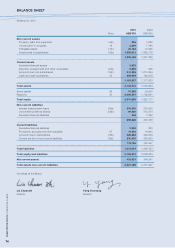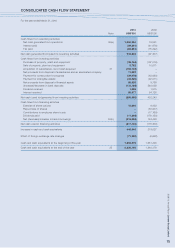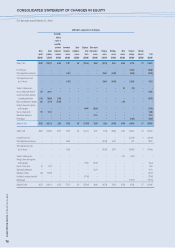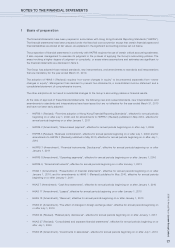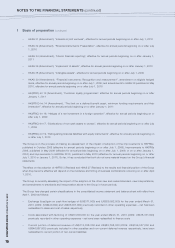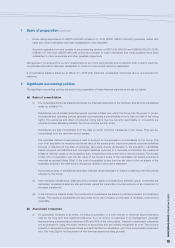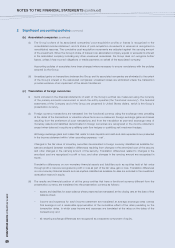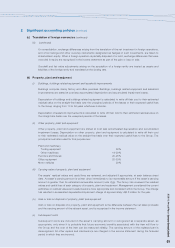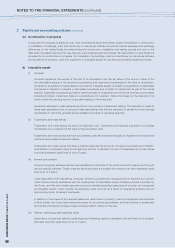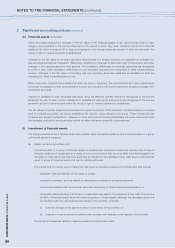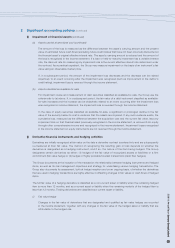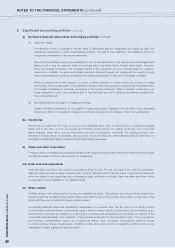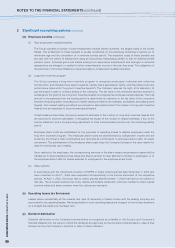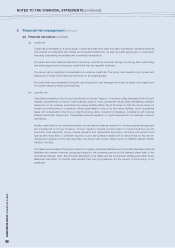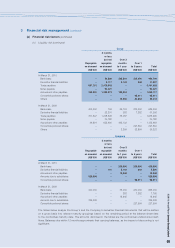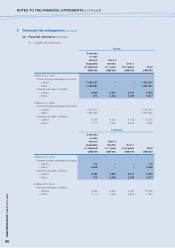Lenovo 2010 Annual Report Download - page 86
Download and view the complete annual report
Please find page 86 of the 2010 Lenovo annual report below. You can navigate through the pages in the report by either clicking on the pages listed below, or by using the keyword search tool below to find specific information within the annual report.
2009/10 Annual Report Lenovo Group Limited
84
NOTES TO THE FINANCIAL STATEMENTS (continued)
2009/10 Annual Report Lenovo Group Limited
84
2 Significant accounting policies (continued)
(h) Financial assets (continued)
Gains and losses arising from changes in the fair value of the ’financial assets at fair value through profit or loss’
category are presented in the income statement in the period in which they arise. Dividend income from financial
assets at fair value through profit or loss is recognized in the income statement as part of other income when the
Group’s right to receive payments is established.
Changes in the fair value of monetary securities denominated in a foreign currency and classified as available-for-
sale are analyzed between translation differences resulting from changes in amortized cost of the security and other
changes in the carrying amount of the security. The translation differences on monetary securities are recognized
in profit or loss, while translation differences on non-monetary securities are recognized in other comprehensive
income. Changes in the fair value of monetary and non-monetary securities classified as available-for-sale are
recognized in other comprehensive income.
When securities classified as available-for-sale are sold or impaired, the accumulated fair value adjustments
previously recognized in other comprehensive income are included in the income statement as gains or losses from
investment securities.
Interest on available-for-sale securities calculated using the effective interest method is recognized in the income
statement as part of other income. Dividends on available-for-sale equity instruments are recognized in the income
statement as part of other income when the Group’s right to receive payments is established.
The fair values of quoted investments are based on current bid prices. If the market for a financial asset is not active
(and for unlisted securities), the Group establishes fair value by using valuation techniques. These include the use
of recent arm’s length transactions, reference to other instruments that are substantially the same, discounted cash
flow analysis, and option pricing models refined to reflect the issuer’s specific circumstances.
(i) Impairment of financial assets
The Group assesses at each balance sheet date whether there is objective evidence that a financial asset or a group
of financial assets is impaired.
(a) Assets carried at amortized cost
A financial asset or a group of financial assets is impaired and impairment losses are incurred only if there is
objective evidence of impairment as a result of one or more events that occurred after the initial recognition of
the asset (a ‘loss event’) and that loss event has an impact on the estimated future cash flows of the financial
asset or group of financial assets that can be reliably estimated.
The criteria that the Group uses to determine that there is objective evidence of an impairment loss include:
– significant financial difficulty of the issuer or obligor;
– a breach of contract, such as default or delinquency in interest or principal payments;
– it becomes probable that the borrower will enter bankruptcy or other financial reorganization; or
– observable data indicating that there is a measurable decrease in the estimated future cash flows from a
portfolio of financial assets since the initial recognition of those assets, although the decrease cannot yet
be identified with the individual financial assets in the portfolio, including:
(i) adverse changes in the payment status of borrowers in the portfolio; or
(ii) national or local economic conditions that correlate with defaults on the assets in the portfolio.
The Group first assesses whether objective evidence of impairment exists.


